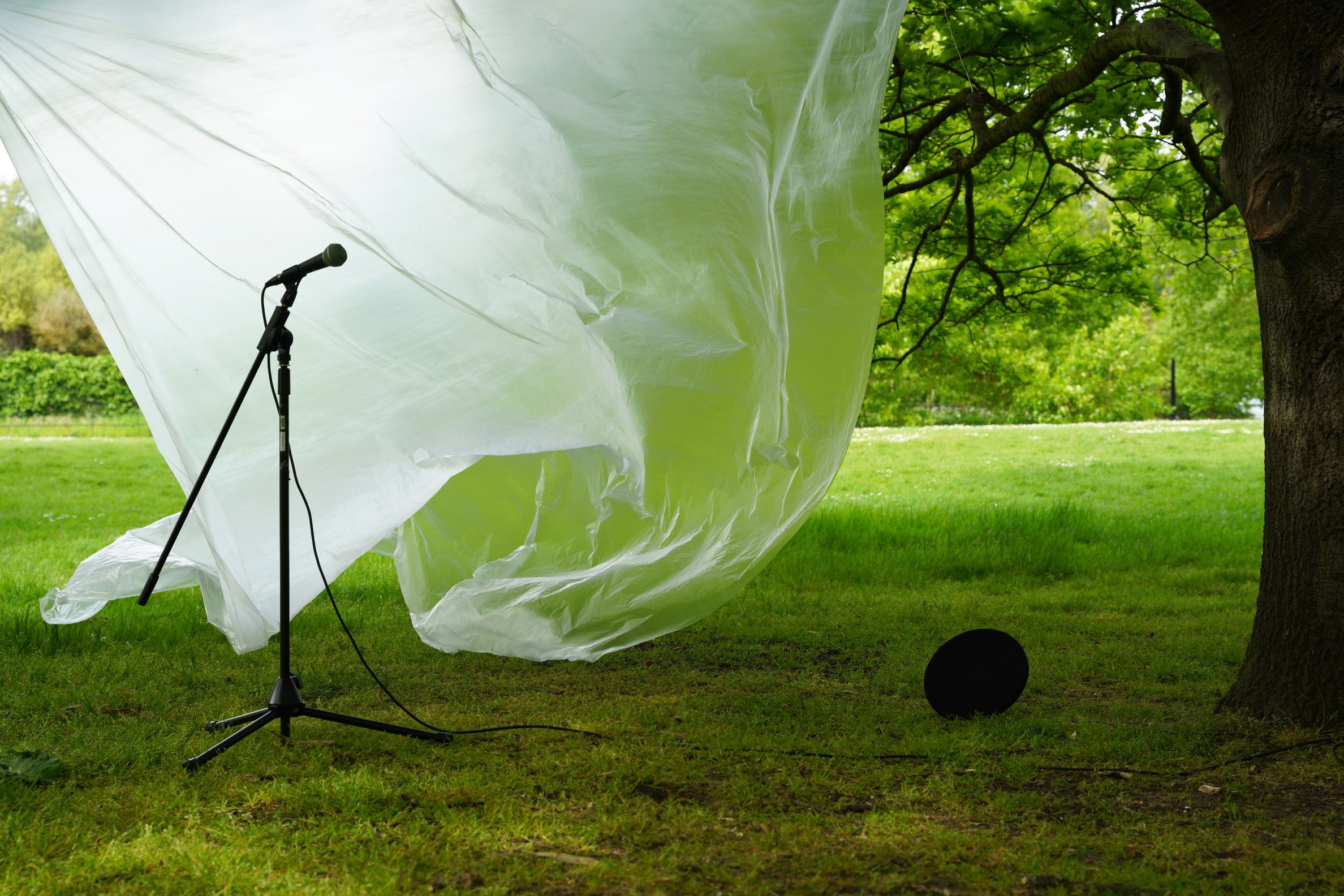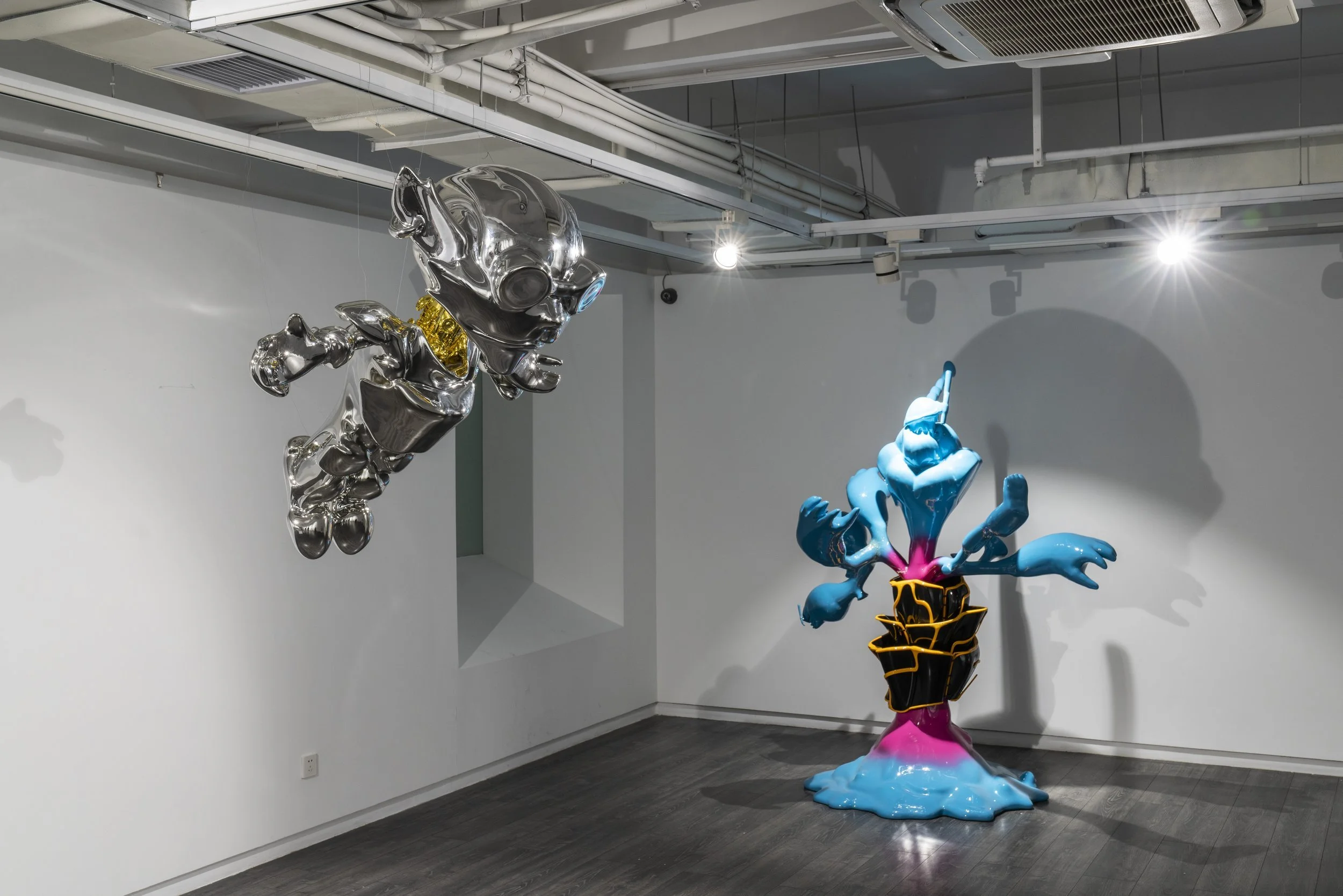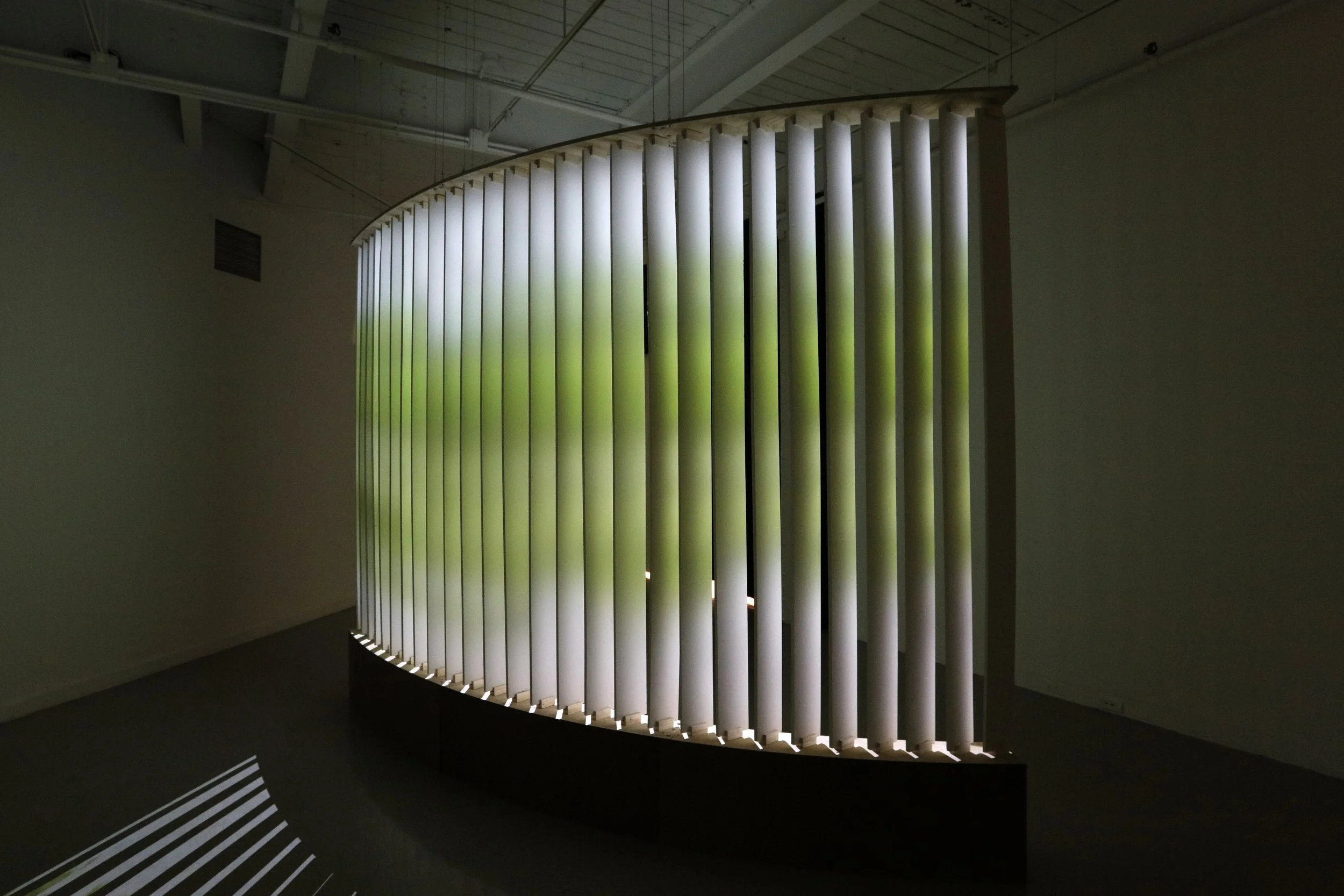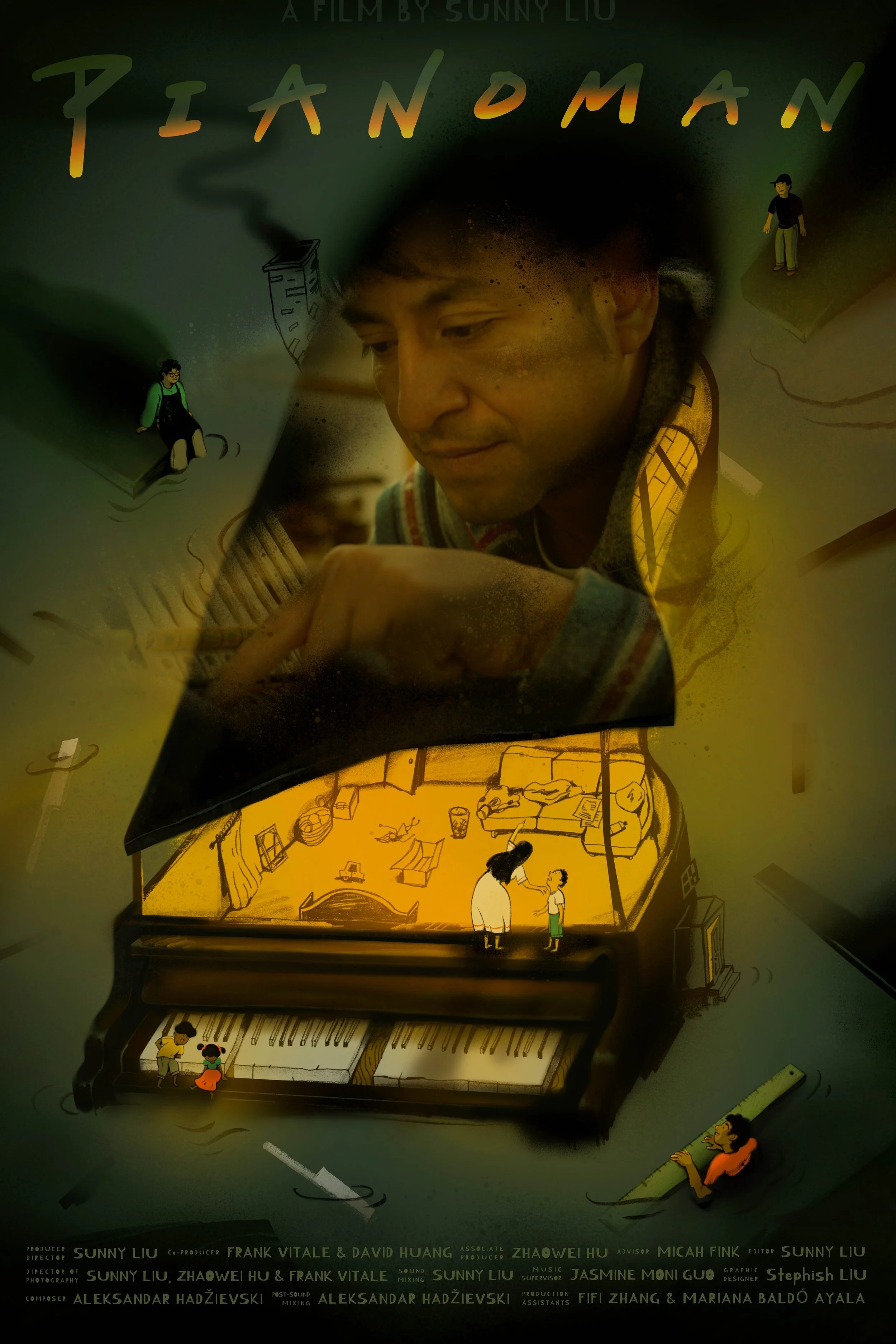10 Questions with Wenhui Jiang
Wenhui Jiang is a Chinese designer and artist, now based in London. She completed her undergraduate studies in Product Design. And after that, she started her MA in Information Experience Design at the Royal College of Art.
Sensory experiences in everyday life are central to her practice. Most of the time, humans are dominated by an ocular-centric paradigm: a vision-generated, vision-centred interpretation of knowledge, truth, and reality. Wenhui explores how senses other than sight affect the viewer's experience in space. Her work aims to locate the subtle bonds between people, objects, and the surrounding environment. Her research poses the question, How might we create an immersive environment replicating some of the positive effects of exposure to nature?
Wenhui Jiang - Portrait
INTERVIEW
Please, tell us a little bit about your background and studies. What kind of education or training helped you develop your approach to art?
I have been in an active and passive process of finding myself. Before 2016, I was trained as a product designer, and this experience has equipped me with the ability to tackle the design process with rigour and discipline. More precisely, from how to translate initial ideas into a conclusive conceptual blueprint and a cohesive and expressive outcome.
After coming to the UK, my creative thinking began to change; the Independent creative environment offered me a boundaryless environment with infinite possibilities that were for me to explore. When designing a product, I mechanically followed the 'prescriptive' process: finding and solving the pain point and producing the result. And the next follows the same trend. There was no time nor need for me to delve into questions like, "what is design?", "what is its role in a changing world?", "what is my role, my mission as a designer?". I realize that those outcomes were driven by those assignments I passively received instead of initiated by my interests or observations of the surroundings. After I came to London, the process I was accustomed to, collapsed completely. There weren't any more assigned tasks nor a scaled level of success. It turned out to be a granted opportunity for me. When all the accustomed rules ceased to exist and everywhere around the globe paused to move, I was able to face the unknowns with sincereness and audacity by constantly questioning myself. Those questions eliminated pompous skills and techniques from my work, only left with me: my sensations, my observations, my thoughts, and my works.
The Soul of Breath, Installation, 2022 © Wenhui Jiang
The Soul of Breath, Installation, 2022 © Wenhui Jiang
You studied design and currently work with immersive environments and sensory experiences. How would you describe yourself as an artist?
Design is, for me, a stimulating vehicle to formulate and realize my ideas and ultimately express my creativity as a dynamic individual. I love the integration of different designs. I define my personal identity as an agent who communicates between audience and information by bridging art and engineering. It's like everyone can learn about global warming, the anxiety of the young population, and the degradation of the rainforest in the Amazon from the data and textual statements in reports and documents. But when that information is felt firsthand and presented to them vividly in various ways, everything is different again. That's why I also love the subtle self-expression yet powerful social innovation a designer brings to our world. The more I delved into the enriching world of design, the more I appreciated how significant good design brings to our life and surroundings. So I live, observe, and improvise.
And what is your aim as an artist? What would you like the public to get away from your work?
I wrote this long ago when I was thinking about this question. I want to create a space, A space where people can be in it, Not an empty room, More like a hazy space, An area that is surrounded by: maybe it's fog; perhaps it's light; maybe it's some smell.
In this space, vision may not be the first direct sensation. It's more like a space you walk into with a thin cloth over your head. You can see something vaguely through the fabric, but it's not there. More like using the rest of your body to perceive the space Connecting with the space.
You can hear a sound. Maybe it's a sound that can instantly throw you into a memory. Maybe it's a sound that pulls you into another world of imagination.
You can feel the moisture on your skin. Your fingertips can feel the texture of something rough or warm. Your sweat hairs might beat with the sound.
Here you are still and silent as a point. This space draws a massive gap between you and your surroundings. I want my work to give the viewer the freedom and space to think for themselves, to see the work and reflect on it rather than follow my ideas.
Bouncing an idea, Moving image, 2021 © Wenhui Jiang
Let's talk about your creative process. What aspect of your work do you pay particular attention to?
In my work, I focus more on the iterations of the process, and I like to explore the development and changes in the project as I go along. In my project, the Soul of Breath, I experimented many times with breathing. For example, it occurred to me: our breath forms the bond between us and everything, pulling back and forth. So I would find a piece of cloth to wrap me with a plant, trying to find this sense of connection through exchanging oxygen and carbon dioxide. And then I think: what does my current breathing have to do with the Atlantic Ocean, or how does the gas produced by the Atlantic Ocean reach my body, and how often? Then I would start to make some breath-tracking devices. And so on, I would capture every idea in the process, looking for the final output.
You work mainly with mixed-media installations. Where do you get your inspiration from?
I have long been interested in sensory experiences, especially sonic experiences. I see them as an integral part of the artist's process of conveying a message through their work, and it is in this process I began to think about the different experiences that our different senses bring to us. Most of the time, we are dominated by an ocular-centric paradigm, a vision-generated, vision-centered interpretation of knowledge, truth, and reality. As a window, vision turns what we see into what we believe. Although the development of human vision is itself mysterious and enchanting, sounds inspire me more with their vagueness and consciousness. It mobilizes people's emotions and gives us more space for imagination, and it is inclusive yet personal.
The Soul of Breath, Installation, 2022 © Wenhui Jiang
The Soul of Breath, Installation, 2022 © Wenhui Jiang
In your statement, we read that you explore "how senses other than sight affect the viewer's experience in space," and your work "aims to locate the subtle bonds between people, objects, and the surrounding environment." How do you translate these concepts into artwork?
This is why I chose to do a multimedia installation, which provides a multi-dimensional experience. In "The Soul of Breath", I choose PE fabric as a part. Its ephemeral skin influences the surroundings as much as its other side space offers a lucid view outwards. At the same time, this part provides the viewer with a magical place to merge breath, sound, and nature, challenging our perception. I will use materials, sounds, and other elements to mobilize the audience's senses, bring them into the work, and become a part of the work.
At the same time, what is the role of the viewers in relation to your works? Do you need them to participate actively?
The viewer is more like a co-creator of the work. Their participation makes the work more complete, like a performance completed by the artist and the audience.
Bury the Sound, Moving image, 2020 © Wenhui Jiang
Let's talk about the future. What are you working on now, and what are your plans for the future? Anything exciting you can tell us about?
I have several previous projects that can continue to iterate and advance. And I am currently researching animism. I plan to experiment with more scenarios in the future. I'm also preparing for an exhibition in Dubai in January.
As we are getting closer to a new year, what do you hope to accomplish in 2023 regarding career goals and personal life?
I hope that in the new year, I can continue to promote my creation and, if possible, learn how to make some traditional materials.
Finally, any shows, galleries, or publications where our readers can find your work?
Yes, my work is being exhibited at the Holy Art Gallery in London. You can go and see it.






















